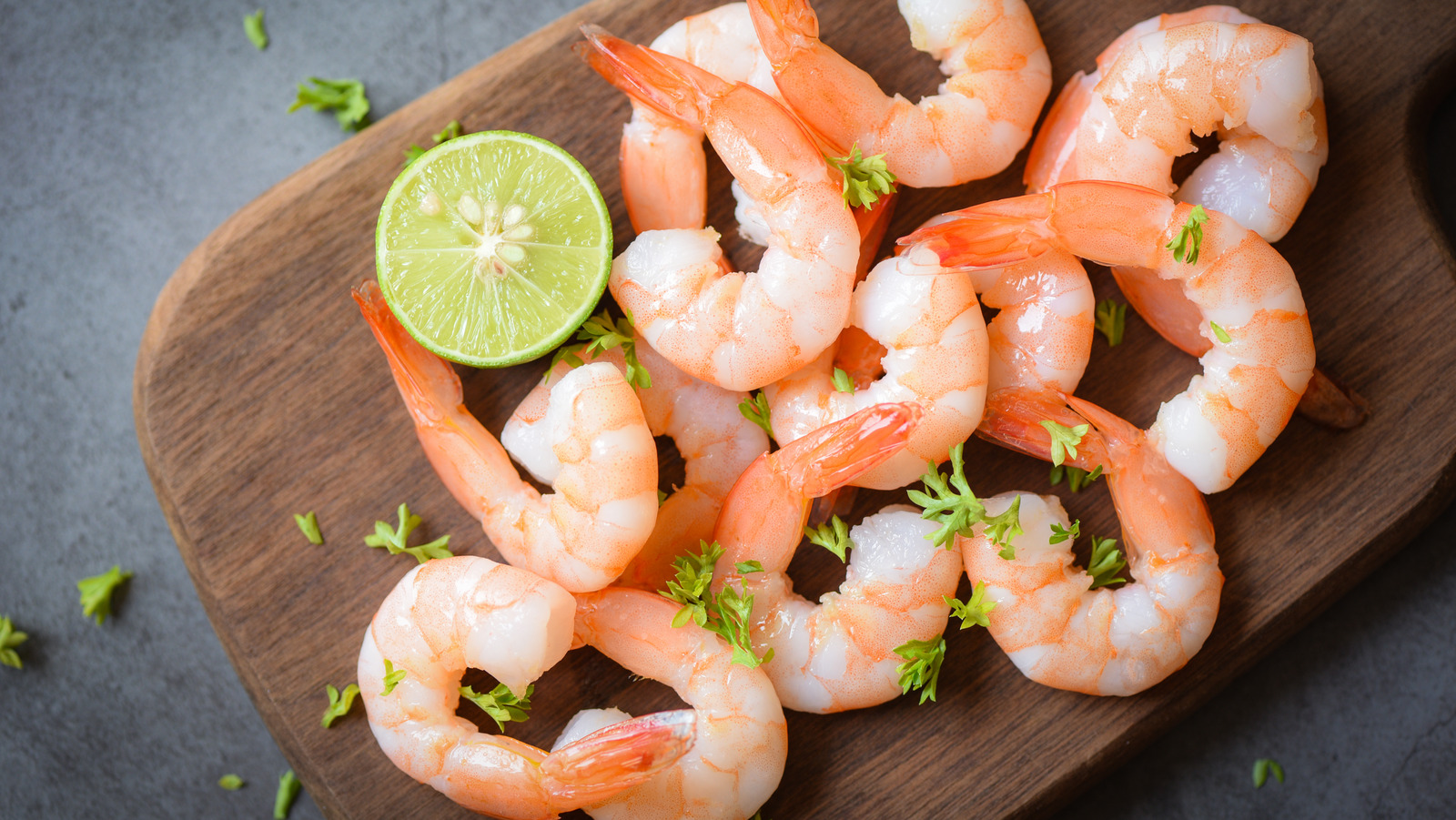Hey there, fellow seafood lovers! As someone who’s had their fair share of unfortunate experiences with spoiled shrimp (trust me, it ain’t pretty), I’ve learned the hard way about how important it is to know when cooked shrimp has gone bad Today, I’m gonna share everything I know about keeping you safe from bad shrimp and those nasty food poisoning episodes.
The Quick Answer
Before diving deep, here’s what you need to know: Trust your senses! If your cooked shrimp has a strong ammonia-like smell, feels slimy, or looks discolored, it’s time to say goodbye. When in doubt, throw it out!
5 Foolproof Ways to Tell If Your Cooked Shrimp Is Bad
1. The Smell Test (Your Best Friend)
- Fresh cooked shrimp should have a mild, slightly salty smell
- Bad signs include:
- Strong fishy odor
- Ammonia-like smell
- Sour smell
- Any unpleasant or “off” odors
2. The Texture Check
- Good shrimp should be:
- Firm but slightly springy
- Clean to touch
- Bad shrimp will be:
- Slimy
- Mushy
- Sticky to touch
- Overly soft
3. Visual Inspection
- Fresh cooked shrimp should be:
- Pinkish-white or orange in color
- Opaque
- Clean-looking
- Warning signs include:
- Gray coloring
- Green spots
- Black spots
- Unusual discoloration
- Mold growth (yuck!)
4. Time Check
Listen up! This is super important
- Refrigerated cooked shrimp lasts 3-4 days max
- Frozen cooked shrimp stays good for 2-3 months
- Left at room temp? Don’t keep it longer than 2 hours!
5. The Last Resort Taste Test
I personally wouldn’t recommend this but if you must
- Take a tiny bite
- Don’t swallow if you notice:
- Sour taste
- Bitter flavor
- Metallic taste
- Any unusual flavors
Proper Storage Tips to Keep Your Shrimp Fresh Longer
In the Fridge
- Store in airtight containers
- Keep on bottom shelf (coldest part)
- Maintain temp below 40°F
- Don’t overcrowd containers
In the Freezer
- Use freezer-safe bags
- Remove as much air as possible
- Label with date
- Store at 0°F or below
What Happens If You Eat Bad Shrimp?
Look, I’ve been there and it ain’t fun! Here’s what might happen:
- Nausea
- Vomiting
- Diarrhea
- Stomach cramps
- Headaches
- Fever
- Blood in stools (seek medical help immediately!)
What To Do If You Get Sick
If you’ve eaten bad shrimp and feeling rough, here’s what helped me:
- Drink plenty of water
- Take electrolyte drinks
- Eat bland foods (BRAT diet – Bananas, Rice, Applesauce, Toast)
- Get lots of rest
- Take over-the-counter meds like Pepto-Bismol
Prevention Tips
Let’s keep it real – prevention is better than cure! Here’s what I always do:
- Buy from trusted sources
- Check expiration dates
- Store properly immediately after purchase
- Don’t leave cooked shrimp at room temperature
- Clean hands and surfaces while handling
- Don’t refreeze thawed shrimp
FAQs About Bad Cooked Shrimp
Q: Can I eat cooked shrimp left out overnight?
A: Nope! Never eat shrimp left out for more than 2 hours.
Q: Is it okay if my shrimp has a slight fishy smell?
A: A mild seafood smell is okay, but anything strong or unpleasant is a red flag.
Q: Can I still eat freezer-burned shrimp?
A: While not unsafe, freezer-burned shrimp won’t taste great. Better skip it!
Final Thoughts
Y’all, I can’t stress enough how important it is to be careful with seafood. Bad shrimp can really mess up your day (or week!). When in doubt, just remember this golden rule: better safe than sorry! Trust your senses, follow proper storage guidelines, and don’t take unnecessary risks.
Remember, we’re all human and sometimes make mistakes, but with these tips, you’ll be much better equipped to handle your cooked shrimp safely. Stay safe and enjoy your seafood adventures!
Got any shrimp horror stories or tips to share? Drop them in the comments below – I’d love to hear from ya!
Would you like me to explain or break down any part of this article further?

Best Ways to Thaw Shrimp
- Fridge Overnight: Place frozen cooked shrimp in the fridge and let it thaw slowly overnight for best results.
- Cold Water Method: Place the shrimp in a sealed plastic bag and submerge it in cold water. Change the water every 30 minutes until thawed.
- Avoid microwaving: This can cook the shrimp unevenly and ruin the texture.
Tips for Reheating Cooked Shrimp
Reheating cooked shrimp can be tricky—overcooked shrimp turns rubbery fast. Here’s how to warm raw shrimp and do it up properly:
- On the Stove: Heat a pan over low heat, add a little olive oil, and warm shrimp for 1-2 minutes.
- In the Oven: Place shrimp in a covered dish, add a splash of water and bake at 300°F (150°C) for about 10 minutes.
- In Boiling Water: Drop shrimp into boiling water for 30 seconds, then remove immediately.
- Avoid Microwaving: It tends to make shrimp rubbery.
How long does cooked shrimp stay in the fridge? 3 to two hours to 4 days, of course, on the condition that it is well-stored in an airtight container. Freezing cooked shrimp will be your better option for longer storage when you are not planning to eat shrimp immediately. Always give it a spoilage check; when in doubt, throw it out to avoid food safety risks.
Follow these storage conditions, and you can enjoy shrimp at its best quality without any worry!
